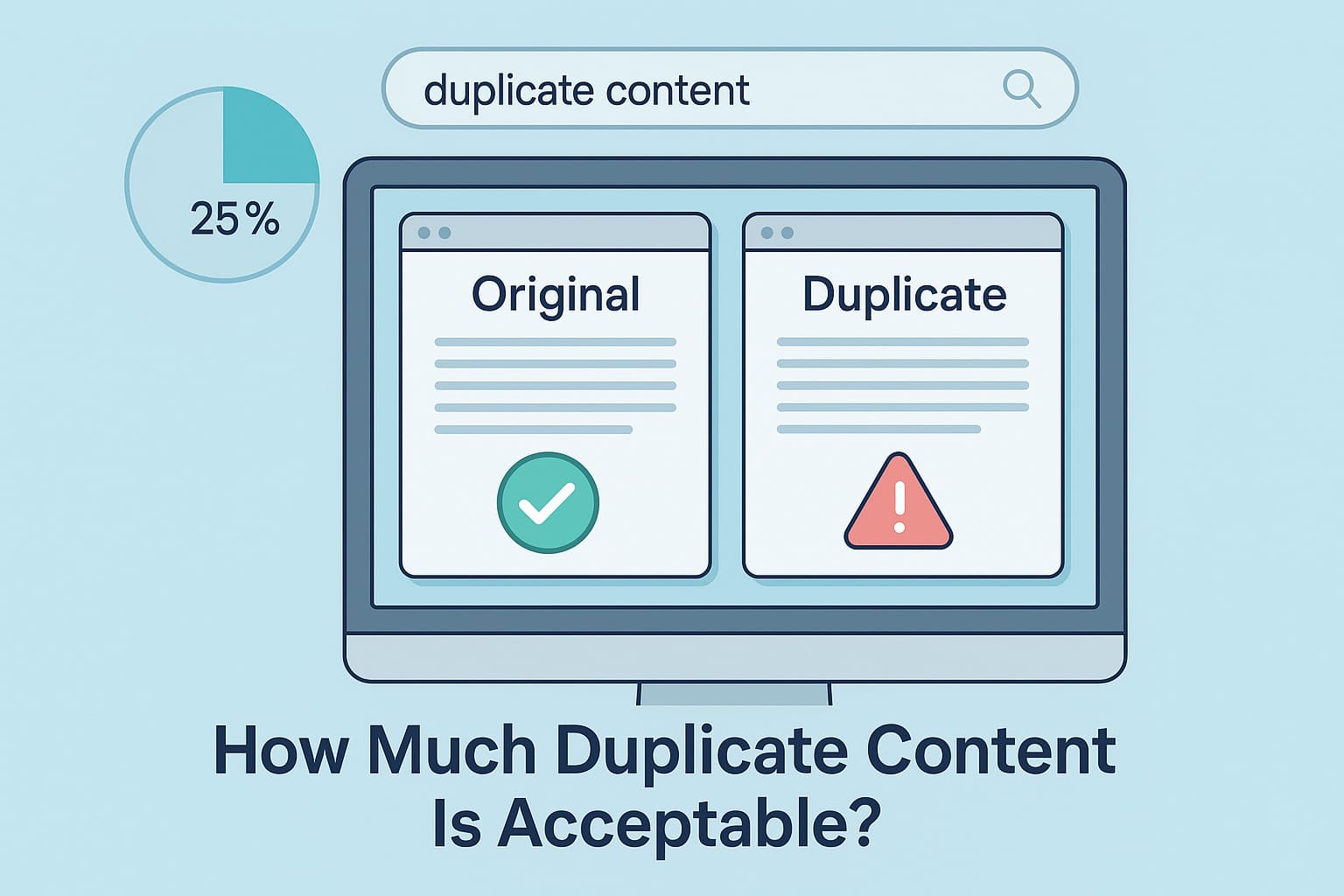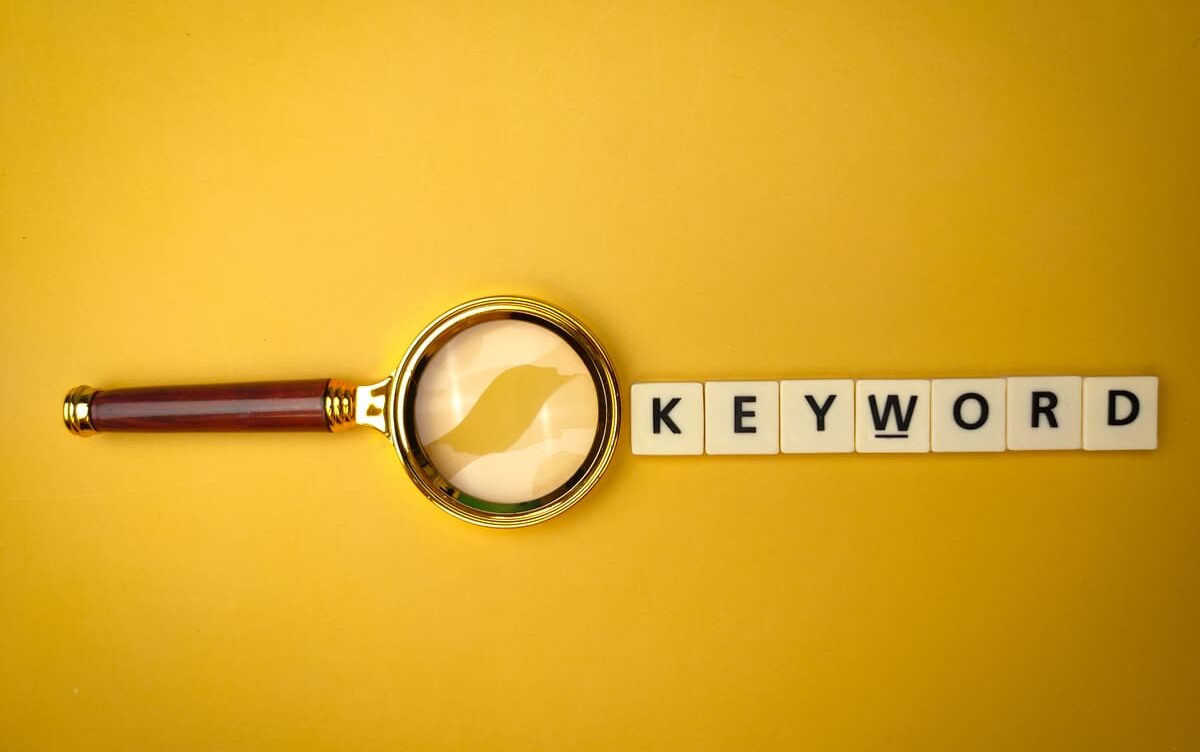Not all repeated content is bad. But too much can hurt.
Google may skip pages if it sees the same text again and again. This means your site can drop in search results, even if the content is yours.
Duplicate content is not always copied content. Sometimes it is reused product info, page templates, blog intros, or legal disclaimers. It can happen without any bad intent. But search engines do not check intent. They check repetition.
So how much duplicate content is actually allowed? That is what this post answers. You will learn:
- How much content can be repeated without a problem
- When duplication becomes a risk
- Where duplicate content hides on your site
- How to fix it with simple steps
The goal is clear. This article was made to keep your rankings strong, your content clean, and your visitors trusting what they see.
Now let us break it down and show you what is safe, what is not, and what you should do next.
What Is Duplicate Content?
Duplicate content is any repeated text across pages that may confuse Google on what to rank. This can happen on your own website or across different websites.
If Google sees the same content more than once, it may not know which page to show.
Search engines often skip or filter pages that look too similar. This means your best content could be ignored, even if it was published first.
Common Types of Duplicate Content
- Exact copy of a page or paragraph
- Copied product descriptions used on many items
- Reused intros or footers across blog posts
- Similar service pages for different cities
- Syndicated content without proper credit
Not all duplication is bad. Some is expected. But too much repeated information can confuse search engines and lower your site rankings.
Does Duplicate Content Hurt SEO?
Duplicate content can quietly damage your site performance. When two or more pages look the same, Google may skip one or both. It tries to show only one version and hides the rest. That means your helpful page might never be seen.
This does not always lead to a penalty, but it often causes ranking loss. Google wants each page to give something fresh. If your content is too close to another, it may think you copied or reused without value.
Sometimes your own pages compete with each other. This is called keyword cannibalization. It spreads your strength too thin. Instead of one strong page, you end up with several weak ones.
Google also saves crawl power. If it finds many similar pages, it stops crawling the rest. This can delay new content and lower trust in your site.
So yes, duplicate content affects your visibility. Even if the words are yours, repetition can block growth. Keeping each page clear, original, and focused helps Google pick you first.
How Much Duplicate Content Is Considered Acceptable?
A small amount of duplicate content is normal. Even Google agrees with that.
Matt Cutts, a former head of Google’s webspam team, once shared that around 25% to 30% of the web contains repeated content. That includes things like header, footer, terms and conditions, product info, and blog tags.
This kind of content is not treated as spam. Google does not punish sites for it unless the duplication is clearly done to cheat search rankings.
That means your site will not get penalized just because some sections look alike. Google only takes action if you copy large blocks across many pages to manipulate traffic.
If you keep most of your content original and useful, you are safe. It is smart to avoid repeating big sections. Focus on giving each page a clear purpose. That helps Google choose the right page and keeps your site strong in search.
| Duplicate Level | Risk Level | What You Should Do |
| 20 percent or less | Safe | Monitor but no changes needed |
| 21 to 30 percent | Moderate | Improve content or rewrite sections |
| 31 percent or more | High Risk | Fix quickly or remove repeated parts |
Types of Duplicate Content You Might Not Notice
Duplicate content is not always easy to spot. Some pages look different but carry the same message. This confuses search engines even when the design changes.
Many websites repeat small chunks of text without thinking about it. Over time, these repeated parts add up and weaken your overall content strength.
Here are common examples that often go unnoticed:
- Product pages with the same description copied from a manufacturer
- Blog posts with matching introductions or closing paragraphs
- Location pages where only the city name changes
- Printer-friendly versions of existing pages
- Tag or category pages showing the same blog previews
- Copy-pasted content used across multiple platforms without credit
These are not always harmful. The problem starts when large parts of your site say the same thing. It makes it harder for Google to know which page matters most.
To stay clear, review your content often. Make sure each page adds new value and speaks to a unique intent. That keeps your site clean, focused, and ready to rank.
How to Detect Duplicate Content
Finding duplicate content is the first step to fixing it. You do not need to be a tech expert to spot the problem. There are simple ways to check if your pages repeat too much.
Start by looking at your own site. Do different pages have the same titles, headings, or blocks of text? That is a red flag. Even small things like repeated service descriptions or reused blog closings can cause issues.
You can also use tools to scan your site:
- Google Search Console shows indexing problems that might come from duplication
- Siteliner scans your site and highlights repeated sections
- Copyscape checks if other websites copied your content
- Screaming Frog can crawl your pages and spot near matches
These tools help you find what you may miss by eye. If a page looks too close to another, rewrite or update it. Even a few new lines can help Google see it as unique.
Regular checks keep your content fresh and search-friendly. The cleaner your site, the easier it is for Google to trust it.
How to Fix Duplicate Content Issues Step-by-Step
Duplicate content does not always need a full rewrite. You just need to clean up what is confusing and guide Google to the right page. Follow these clear steps to fix it.
Step 1: Identify Duplicate Content
Use Google Search Console to check for indexing issues or warnings about similar content.
SEO tools like Screaming Frog, SEMrush, or Ahrefs can crawl your site and flag repeated content across pages. You can also do a quick check using Google itself.
Just search your domain with a short sentence from your content. If the same block appears on more than one URL, that is duplicate content.
Tools like Siteliner or Copyscape also help find exact matches.
Step 2: Choose the Right Fix
If the content is still useful and needs to exist in multiple places, use a canonical tag to tell Google which page should count as the main one.
If the page is not needed at all, delete it and use a 301 redirect to send visitors to the right page.
If there is no replacement, let it return a 404 or 410 status.
You can also add a no-index tag if you want to keep the page live but out of search results.
Step 3: Apply the Fix on Your Site
Add a rel=canonical tag inside the HTML head of the duplicate page to point to the main page.
For redirects, use your CMS or server rules to send the old page to the preferred one. For deleted pages, make sure they return a clear 404 or 410 response.
To stop indexing, place a no-index tag in the HTML of the page you do not want Google to rank.
Step 4: Monitor and Maintain
After fixing, do not stop. Run audits often to make sure no new duplicate pages appear. Check your Search Console regularly to catch any fresh warnings.
Keep your content unique as your site grows. This avoids future problems and helps your rankings stay strong.
Best Practices to Reduce Duplicate Content
Keeping your content clean and unique helps search engines trust your site. Here are simple, smart ways to reduce duplicate content without overcomplicating your workflow.
Write every page with a clear focus. Each page should answer a different question or serve a unique purpose. Avoid making multiple pages that say the same thing with slight changes.
Use original text, not copy-paste. Even if you sell similar products or services, rewrite each description to match the page intent. Add real examples, features, or questions customers often ask.
Add canonical tags on pages that may look similar. This tells Google which version should count, so you avoid confusion without deleting pages.
Block unneeded pages from indexing. If you use tag archives, printer-friendly versions, or filtered search pages, apply a no-index tag. That way, those pages stay live but do not compete in search.
Stick to one URL for each page. Do not let the same content load at both www and non-www, or with and without a slash at the end. Use redirects to guide Google to the right page.
Audit your content often. Over time, blogs, product pages, and service areas can start to overlap. A quick review every few months can keep things clean and help your rankings stay strong.
When Is Duplicate Content Actually OK?
Not all duplicate content is harmful. In fact, some types are expected and do not affect your rankings when handled the right way.
Legal disclaimers often stay the same across pages. Google understands this and usually ignores the repeat.
Syndicated articles are fine if the original version uses a canonical tag. This tells Google where the content came from and helps credit the right source.
Printer-friendly pages should have a no-index tag. This keeps them from showing in search but allows users to still access them.
Multilingual content is allowed when you use hreflang tags. These tell Google which version to show based on the user’s language or location.
If these elements are set up properly, they will not hurt your SEO.
How Google Handles Duplicate Content in 2025
Google is smart enough to know that not all duplication is bad. It does not punish every repeated line. Instead, it filters similar pages to show only the most helpful one.
When Google finds two pages with the same or very close content, it chooses which to rank. The others might still exist, but they are less likely to appear in search results.
This process is called canonicalization. It means Google picks the best version based on signals like page authority, freshness, and structure.
If your site has many pages with repeated text, Google may:
- Show just one page and hide the rest
- Pass link value to the stronger version
- Stop crawling some of the duplicate pages
- Delay indexing until the content changes
This does not mean your site gets punished. But it does mean wasted effort if your content looks the same across many URLs.
The key is clarity. Use unique titles, strong headings, and fresh words. That helps Google choose your page with confidence.
Conclusion
Duplicate content is not always bad, but too much can hold your site back. Keep your pages clear, original, and useful. Fix what repeats without value, guide Google with proper tags, and review your content often. A cleaner site means better rankings, stronger trust, and more visibility.






